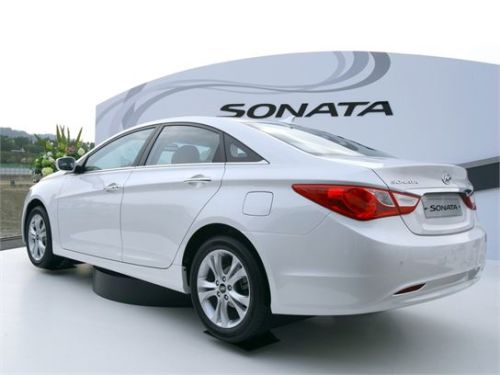Hyundai Unveils the 2011 Sonata Hybrid
The Sonata Hybrid uses Hyundai's home developed Direct Hybrid Blue Drive system, with a combination of a 2.4 litre four cylinder petrol engine and a 30-kilowatt electric motor, which enables the Sonata Hybrid to return fuel consumption figures of 36 mpg for city driving or 40 mpg on the highway. These compare reasonably with the opposition from the Toyota Camry hybrid (33mpg city/34 mpg highway) and the Ford Fusion hybrid (41mpg city/36mpg highway). |  |
Hyundai claim that the battery technology used in the Sonata Hybrid has a 1.4 kilowatt-hour capacity lithium-polymer battery pack which gives it not only a more efficient battery option, but it is also lighter than the nickel-metal-hydride battery used by Toyota and holds a charge up to 25% longer. The electric motor is coupled to the same 6-speed automatic transmission used in the non-hybrid Sonata and gives the vehicle a top speed under electric power only of 62 mph - but with a limited range of just a mile or so when running on electric power only. A second electric motor in the Sonata Hybrid is used to start the petrol engine and is used as a conventional alternator to charge the battery pack during petrol driven operations. However, unlike a conventional alternator which runs at 12 volts, the Hyundai Starter-Generator operates at 270 volts. The petrol engine in the Sonata Hybrid runs on the Atkinson cycle - first developed by James Atkinson in 1882, but now commonly used in hybrid vehicles such as the Ford Fusion - which offers greater efficiency than conventional four-stroke engines. Hyundai's version provides 166 horsepower and 208.8 Newton Meters of torque. While the Sonata Hybrid uses many of the components from the non-hybrid model, there are subtle design changes in the body work and wheels, all designed to reduce drag and improve efficiency. These have resulted in an extremely low drag coefficient of 0.25 - the 2011 Nissan GT-R sports car has a slightly higher drag coefficient of 0.27, which speaks much for the skills of the Hyundai design team. | |